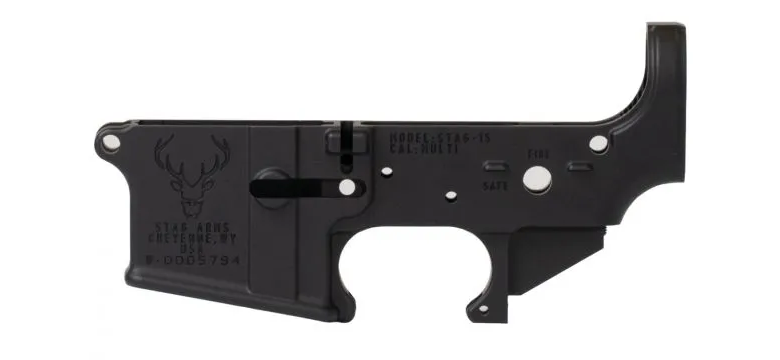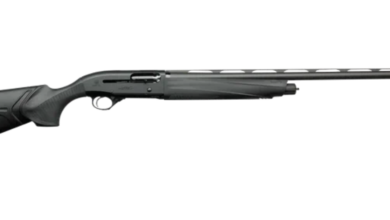Does a Stripped Lower Require an FFL?

When it comes to buying parts for firearms, there can be a lot of questions, especially around the requirements for each part. One part that often raises questions is the stripped lower receiver.
The stripped lower is an essential component of an AR-15, but many people wonder whether buying one requires a Federal Firearms License (FFL) transfer. In this article, we’ll take a closer look at stripped lower receivers, explain why they are treated differently, and explore what is needed to know about purchasing one.
What is a Stripped Lower Receiver?
A stripped lower receiver is the basic frame of the AR-15 rifle. It’s called “stripped” because it lacks other essential parts that make up a complete lower receiver, such as the trigger, hammer, and safety mechanism. In simple terms, the stripped lower is like the skeleton of the firearm. It provides the foundation to which all other parts, such as the upper receiver, barrel, and trigger group, will be attached.
The stripped lower may not look like much on its own, but it’s legally considered the “firearm” portion of the AR-15. This distinction is important because federal laws in the United States classify the lower receiver as a firearm. Unlike other parts, such as the barrel or stock, the stripped lower receiver is subject to regulations that govern firearms.
Why is the Lower Receiver Regulated?
The reason the lower receiver is regulated comes down to its role in the gun’s functionality. The lower receiver houses the trigger mechanism, the magazine well, and the serial number of the firearm, which is why it is considered the main part of the firearm. Even though a stripped lower doesn’t contain the trigger or other operating parts, its ability to be assembled into a functioning firearm makes it legally recognized as a gun.
This means that buying a stripped lower is treated similarly to buying a complete firearm. Therefore, even though it doesn’t fire a round or contain moving parts, the law requires that a stripped lower be purchased in a similar way to a fully functional gun.
Does a Stripped Lower Require an FFL?
Yes, buying a stripped lower receiver requires an FFL transfer. This means that anyone purchasing a stripped lower will need to go through a licensed dealer, just as they would when buying a full firearm. When a stripped lower receiver is purchased, the dealer conducts a background check, and the buyer must complete the necessary paperwork.
This requirement exists because federal law considers a stripped lower to be a complete firearm in terms of regulation. Even without the parts needed to function, its potential to be turned into a fully operational firearm makes it subject to FFL requirements. As a result, those planning to order a stripped lower must follow the same process required for any other firearm purchase.
Buying a Stripped Lower Receiver Online
When purchasing a stripped lower receiver online, an FFL transfer is still required. The process generally works as follows:
- Choose a Dealer: After selecting the stripped lower receiver from an online retailer, the buyer must choose a nearby FFL dealer to handle the transfer.
- Have the Lower Shipped to the FFL: Instead of being shipped directly to the buyer’s home, the stripped lower receiver is sent to the chosen FFL dealer.
- Complete the Transfer: Once the lower arrives at the FFL dealer, the buyer visits the dealer to complete the transfer. This step involves completing the necessary paperwork and passing a background check.
- Take Possession of the Lower Receiver: After the paperwork is finalized and the background check is successfully completed, the buyer can take possession of the stripped lower receiver.
In some cases, the FFL dealer may charge a small fee for processing the transfer, so it’s a good idea to confirm any costs with the dealer before arranging the shipment.
Are There Exceptions to the FFL Requirement?
In most cases, buying a stripped lower will require an FFL transfer. However, some states may have different regulations for purchasing firearm parts. In a few states, it may be possible to buy certain components, such as an 80% lower receiver, without going through an FFL.
An 80% lower receiver is a partially completed lower that still requires significant machining to function as a firearm. Because it cannot fire or be assembled into a firearm without additional work, an 80% lower isn’t classified as a firearm and may not require an FFL transfer.
However, it’s essential to check state and local laws before purchasing any gun parts, as some states have additional restrictions or require permits for gun parts that aren’t classified as firearms under federal law. Be sure to research local laws or consult with an FFL dealer to confirm what’s required.
What to Look for in a Stripped Lower
When buying a stripped lower, it is important to know what to look for. Here are a few key considerations:
- Material: Stripped lowers are often made from aluminum but can also be constructed from other materials like polymer. Each material has its own advantages and disadvantages, so selecting one that meets specific needs is essential.
- Compatibility: Ensuring the stripped lower is compatible with the intended upper receiver is crucial. While the AR-15 platform is standardized, it is always wise to double-check compatibility.
- Brand and Quality: Purchasing from a reputable brand is critical for reliability. A well-made stripped lower provides a dependable foundation for building a high-quality AR-15.
- Finish: Many stripped lowers feature an anodized or Cerakote finish, which helps protect the metal from corrosion and wear. Selecting a finish suited to the intended use is recommended.
For those looking for a high-quality selection of stripped lower receivers, Black Bayou Armory is a great resource. They offer a variety of options that can meet the needs for building a custom AR-15.
FFL Rules and Stripped Lowers
One key reason for the FFL requirement is to prevent firearms from falling into the hands of those prohibited from owning them. The background check is designed to screen buyers and ensure that firearms are only sold to eligible individuals.
Because stripped lowers can be easily turned into complete firearms with the addition of an upper receiver and other parts, regulating them through FFL dealers is one way to control firearm access.
While some gun owners may see the FFL requirement for stripped lowers as an inconvenience, it is part of federal efforts to regulate firearm sales responsibly.
Conclusion
In short, a stripped lower receiver does indeed require an FFL transfer. Although it may not look like a firearm in its stripped-down form, the fact that it can be easily transformed into a functional gun places it under federal firearms regulations.
Purchasing a stripped lower follows the same process as buying a complete firearm, requiring a background check and paperwork to ensure compliance with federal law.
Before purchasing a stripped lower, it is important to be familiar with both federal and state laws to ensure compliance and avoid legal issues. For a reliable source of firearm parts, including stripped lowers, Black Bayou Armory offers quality products and expert assistance.





